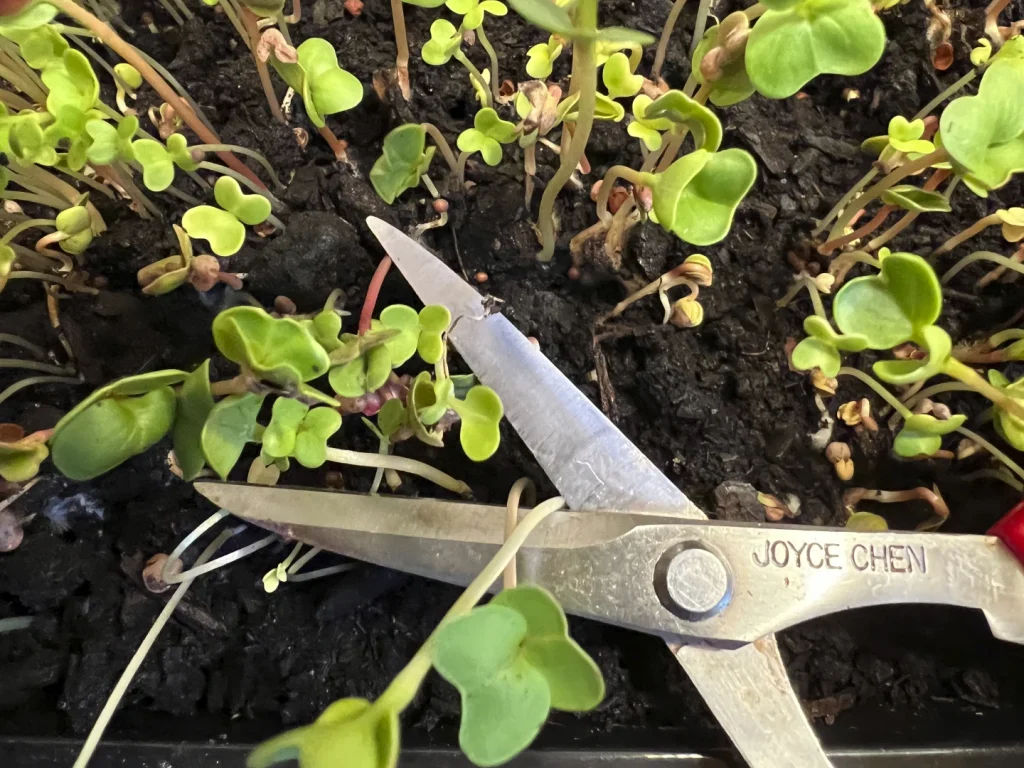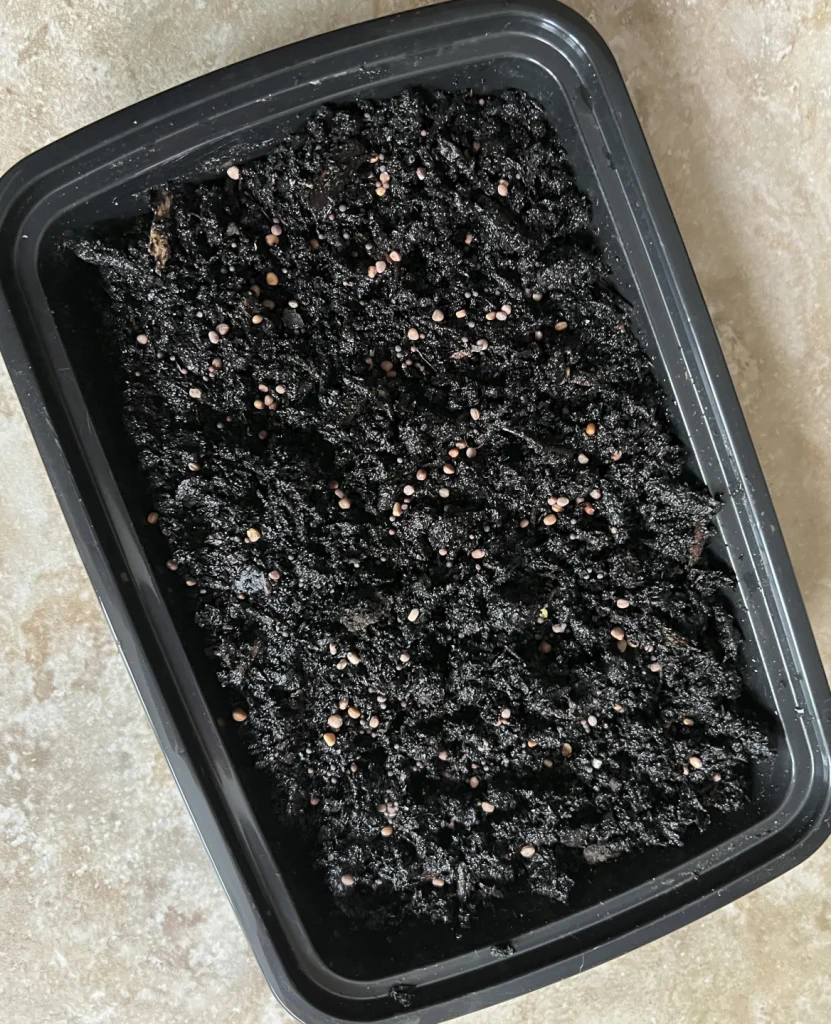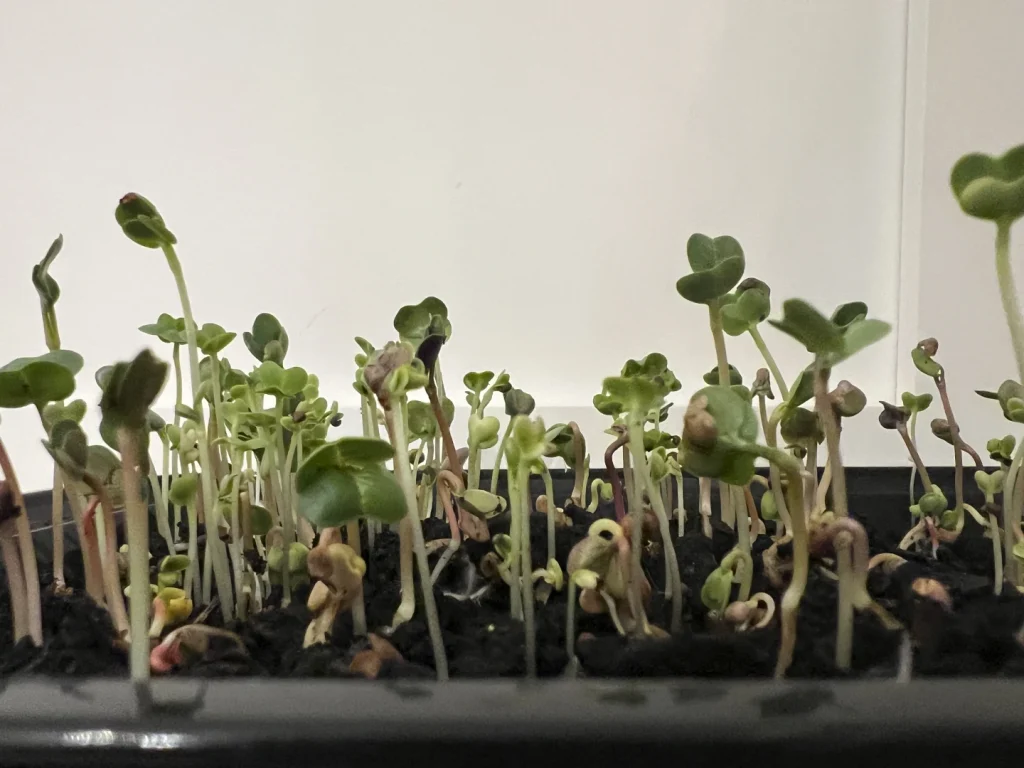Microgreens have been making a significant impact in the culinary world, transcending their traditional role as mere garnishes at high-end restaurants.
These 2-to-3-inch seedlings of edible plants not only elevate the visual appeal and flavor profile of dishes but also boast an impressive nutritional profile.
Furthermore, they offer an engaging and rewarding winter gardening project for enthusiasts. Despite their relatively high retail price of around $30 per tray, the accessibility and affordability of growing microgreens at home make them an attractive option for individuals seeking to incorporate fresh, nutrient-dense greens into their diets.
The surge in popularity of microgreens can be attributed to their multifaceted appeal. Visually striking and bursting with flavor, these tiny plants have become a favored choice for chefs and home cooks alike.
Their delicate leaves and vibrant hues add an artistic touch to culinary creations, enhancing the overall dining experience.
Beyond their aesthetic appeal, microgreens are packed with essential nutrients, including vitamins, minerals, and antioxidants, making them a valuable addition to any diet.
Their concentrated nutrient content has positioned them as a superfood, contributing to their rising demand and recognition as more than just a garnish.
While the prospect of purchasing microgreens from specialty stores or farmers’ markets may seem appealing, the cost can be prohibitive for many individuals. However, the prospect of growing microgreens at home offers a cost-effective and straightforward alternative.
By utilizing minimal space and resources, individuals can cultivate their own supply of microgreens, thus reducing the financial barrier to access these nutritional powerhouses.
This democratization of microgreen production aligns with the broader movement towards sustainable and self-sufficient practices, empowering individuals to take control of their food sources and nutritional intake.
The process of growing microgreens at home is not only economical but also relatively quick and simple. With the right guidance and minimal equipment, individuals can embark on this rewarding gardening endeavor regardless of their prior experience.
The accessibility of the process, coupled with the relatively short cultivation period, makes it an ideal project for those seeking to engage in gardening during the winter months or in limited living spaces.
Furthermore, the satisfaction of nurturing and harvesting one’s own supply of fresh microgreens adds an enriching dimension to the overall experience, promoting a deeper connection to the food we consume.
In addition to their culinary and nutritional benefits, microgreens also hold the potential to contribute to broader societal and environmental goals.
As individuals increasingly prioritize health and sustainability, the cultivation of microgreens at home aligns with these values.
By reducing reliance on commercially grown produce and minimizing food miles, homegrown microgreens support local and sustainable food systems.
Furthermore, the cultivation of microgreens can serve as an educational tool, fostering a deeper understanding of plant growth and the importance of fresh, nutrient-dense foods.
In conclusion, microgreens have transcended their role as mere garnishes, emerging as nutritional powerhouses and engaging gardening projects.
The accessibility and affordability of growing microgreens at home offer a practical solution to the high retail costs associated with purchasing them.
Moreover, the process of cultivating microgreens at home provides individuals with a rewarding and educational experience, aligning with broader societal shifts towards sustainability and self-sufficiency.
As microgreens continue to captivate the culinary world and health-conscious individuals, their potential to transform the way we approach food production and consumption becomes increasingly evident.
The process of growing microgreens is an art that requires attention to detail and a nurturing hand. Whether you are an experienced gardener or a novice enthusiast, the journey of cultivating these delicate greens can be both rewarding and educational.
In this comprehensive guide, we will delve into the intricate steps involved in successfully growing microgreens, from selecting the right seeds to providing optimal growing conditions.
To embark on the journey of growing microgreens, it is imperative to gather the necessary equipment. A dome-covered seed-starting tray or a 2-inch-deep plastic lidded takeout container with drainage holes, a drip tray or rimmed baking sheet, seed-starting potting mix, a spray bottle, and a sunny window are essential.

Additionally, a grow light and a small fan are recommended for optimal growth, although they are not mandatory.
The selection of seeds is a crucial aspect of growing microgreens. Many catalogs and garden centers offer mixed microgreen seed packs that are carefully curated to ensure synchronized germination times. Alternatively, one can create a custom blend using new or leftover seeds.
Whether opting for a mixed variety or a single type, it is essential to avoid seeds from nightshade vegetables such as eggplant, pepper, and tomato, as their leaves contain toxic alkaloids.
Upon acquiring the necessary equipment and seeds, the next step involves the planting process. The seed tray should be filled with seed-starting potting mix and moistened with water.
Following this, a moderately dense layer of seeds is sprinkled over the mix and gently pressed into the soil. It is important not to bury the seeds.
Subsequently, the seeds and the soil’s surface should be sprayed with water, and the container should be covered with a domed lid or plastic cover, placed slightly askew.
If a lid or cover is unavailable, plastic wrap can be used as an alternative, but it should not be sealed tightly.
After the seeds are planted, the tray should be placed on a drip tray or rimmed baking sheet in a warm room with a temperature range of 65 to 70 degrees Fahrenheit.
Daily misting is necessary to keep the soil lightly but evenly moist. Alternatively, a small amount of water can be added to the drip tray, allowing the soil to soak it up through the container’s drainage holes.
It is important to monitor the tray and adjust the watering accordingly to prevent waterlogging.
As the days progress, the microgreens will begin to germinate and grow. It is a captivating experience to witness the transformation from tiny seeds to vibrant green shoots.
The nurturing process involves regular monitoring and care to ensure the optimal development of the microgreens.
Observing their growth under natural light or a grow light, and providing gentle air circulation through the use of a small fan, can contribute to healthy and robust growth.
Once the microgreens have reached the desired height, typically within 7 to 14 days, they are ready to be harvested. Using clean scissors, the greens can be snipped just above the soil line.
The harvested microgreens can be used to enhance culinary dishes, adding vibrant flavors and nutritional value to salads, sandwiches, and various other culinary creations.
Growing microgreens is a gratifying endeavor that offers an opportunity to connect with nature and gain a deeper understanding of plant life.

The process, from selecting the right seeds to observing the growth and ultimately harvesting the greens, is a journey filled with learning and appreciation for the natural world.
By following the steps outlined in this guide and providing the necessary care, one can embark on a fulfilling and enriching experience of cultivating these miniature marvels of nature.
